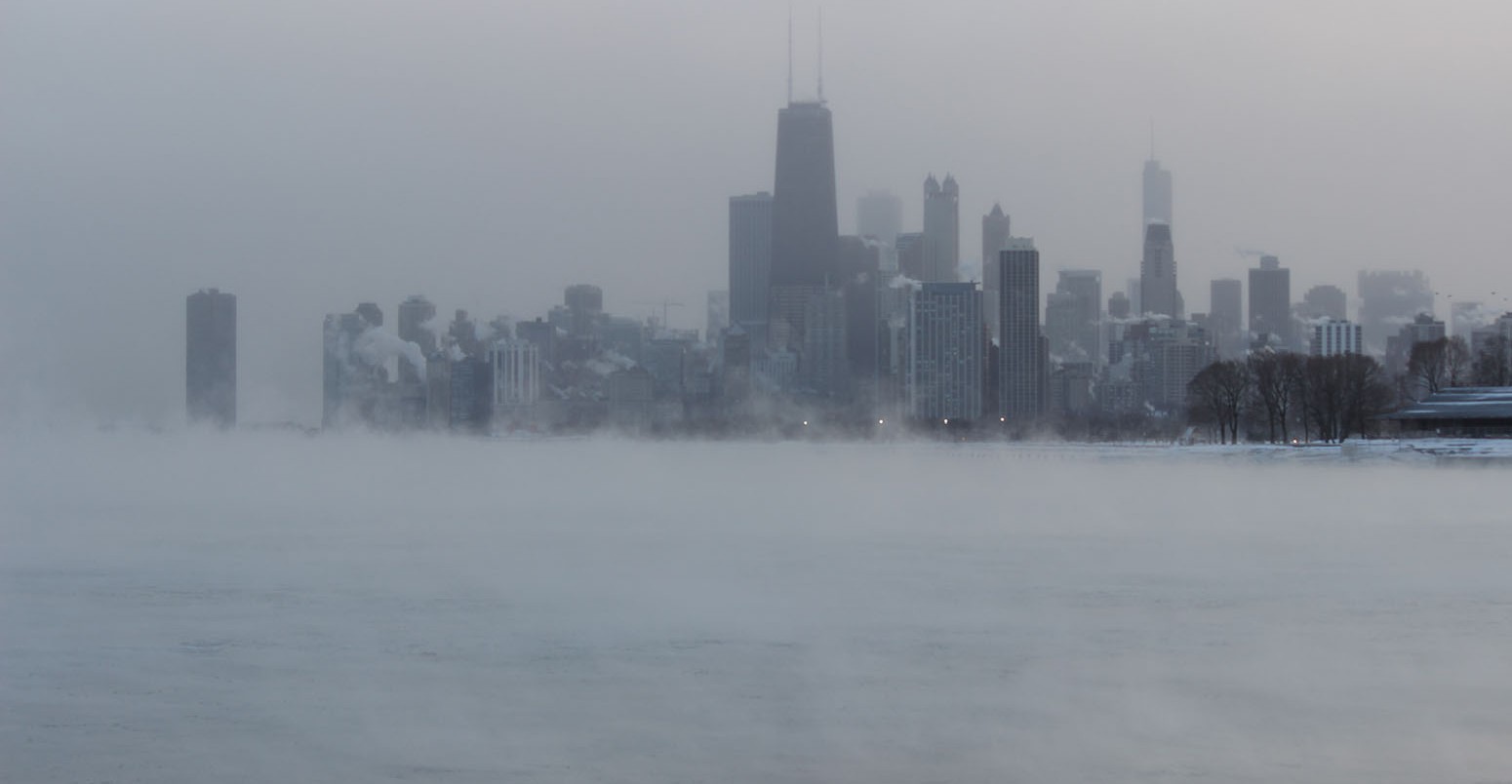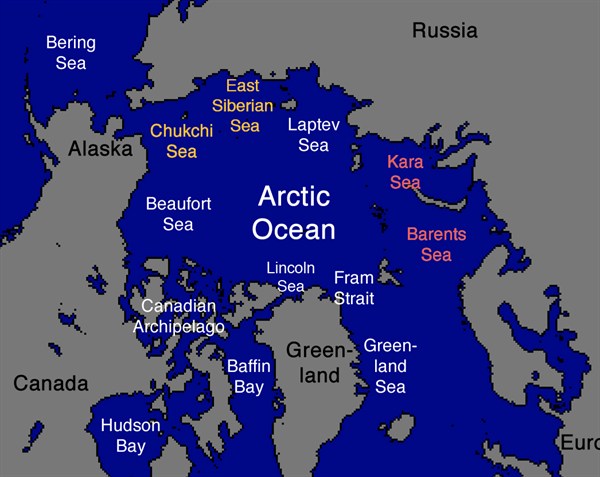Scientists pinpoint Arctic warming hotspots behind severe northern hemisphere winters
Robert McSweeney
08.31.15Robert McSweeney
31.08.2015 | 4:00pmRecent research suggests a warming Arctic could be the cause of a series of very cold winters in the US and Asia. Now, a new study picks out the exact areas in the Arctic circle where unusually high temperatures appear to be driving severe winters in mid-latitude countries.
The findings could help scientists forecast very cold conditions and give people time to prepare, the study says.
Extreme weather
Temperatures in the Arctic are increasing more than twice as fast than the global average – a phenomenon known as Arctic amplification. One of the main reasons is the loss of sea ice in the region. As Arctic sea ice melts, energy from the sun that would have been reflected away is instead absorbed by the ocean.
Scientists have linked the rapidly-warming Arctic to extreme weather in mid-latitude regions of the northern hemisphere – from severe winters in North America to longer-lasting summer heatwaves in Russia.
But most of the research to date has considered warming in the Arctic as a whole. In the new study, just published in Nature Geoscience, researchers look at how unusually warm temperatures in two distinct areas of the Arctic could be leading to severe winters in North America and East Asia.
Arctic regions
The study focuses on the two regions of the Arctic where air temperatures have been warming the fastest since 1998. The map below shows these two areas: the Barents and Kara Seas (in red text), and the East Siberian and Chukchi Seas (in yellow).
Arctic regions map. The two regions considered in the study are the Kara-Barents Seas (in red text) and the East Siberian-Chukchi Seas (yellow). Source: NSIDC, amended by Carbon Brief.
Analysing air temperature records from 1979 to 2014, the researchers found that when conditions over the Barents-Kara Sea region were warmer than usual, East Asia tended to experience a cold winter. This link has also been identified by other scientists.
The new study also finds that higher-than-average temperatures over the East Siberian-Chukchi Sea region were often followed by severe winters in North America.
This has been the situation over eastern parts of the US and Canada for the past two winters, says Prof Jennifer Francis from Rutgers University. Francis wasn’t involved in this study, but has been actively involved in research into whether Arctic warming is affecting weather elsewhere.
Big step forward
So how do warm conditions in these particular areas of the Arctic cast a chill all the way over in Asia and America? Similarly to other studies, the researchers point the finger at the jet stream – a river of high-speed winds flowing west to east high up in the atmosphere.
The jet stream is driven by the temperature difference between the Arctic and the mid-latitudes. As the Arctic warms, the temperature difference decreases, weakening the jet stream, Francis explains to Carbon Brief:
“[The researchers] find that bulges in the upper atmosphere – indicative of large northward swings in the jet stream – occur in tandem with the regional Arctic warming.”
These wavy patterns of the jet stream draw cold air from the Arctic over North America and East Asia. This also leads to a greater number of high pressure “blocking” weather systems, so the cold conditions can stay put for much of the winter.
The new paper will help settle the debate over whether Arctic warming is affecting mid-latitude weather, Francis says:
“The new study takes a big step toward clarifying a controversial and important issue: whether and how rapid Arctic warming and the disappearance of sea ice are contributing to increased weather extremes in lower latitudes.”
Blizzard in New York City in 2015. Credit: Anthony Quintano
Seasonal forecasting
Arctic warming isn’t the only factor affecting how severe these winters are, the researchers point out. But as seasonal predictions of extreme winters are currently quite hit and miss, the results could help improve forecasts in the short-term.
The researchers found that severe winter weather in East Asia followed around 15 days after the warm conditions appeared in the Barents and Kara Seas. For North America, the cold conditions hit around 5 days after the unusually warm conditions in the East Siberian and Chukchi Seas.
Being forewarned about oncoming cold weather could help people to prepare for the oncoming weather, says Francis:
“As we watch the Arctic continue to warm and melt – with regional differences from one year to the next – the research presented by Kug et al may provide early warning of extreme winter weather in heavily populated areas of the northern hemisphere, thereby saving energy and lives.”
But we shouldn’t rely on these findings too heavily for longer-term projections, says Dr James Screen, from the University of Exeter, who leads a three-year project on the impacts of Arctic warming.
Screen says scientists should use the results with caution when trying to understand how a warming Arctic will affect our climate through the 21st century. We can expect sea ice to be lost from across the whole Arctic, rather than in specific areas, he tells Carbon Brief:
“The response to the overall loss of ice may be different to that in response to loss in specific geographical regions.”
In the longer-term, research by Screen suggests that as global temperatures rise, the risk of severe winters North America is likely to fall, not rise, if greenhouse gas emissions continue to be high. So as the Arctic continues to warm, and sea ice continues to melt, we can’t expect its influence on mid-latitude weather to stay the same.
Main image: Chicago and Lake Michigan during the 2014 cold wave.
Kug, Jong-Seong. et al. (2015) Two distinct influences of Arctic warming on cold winters over North America and East Asia, Nature Geoscience, doi:10.1038/ngeo2517
-
Recent research suggests a warming Arctic could be the cause of a series of very cold winters in the US and Asia




